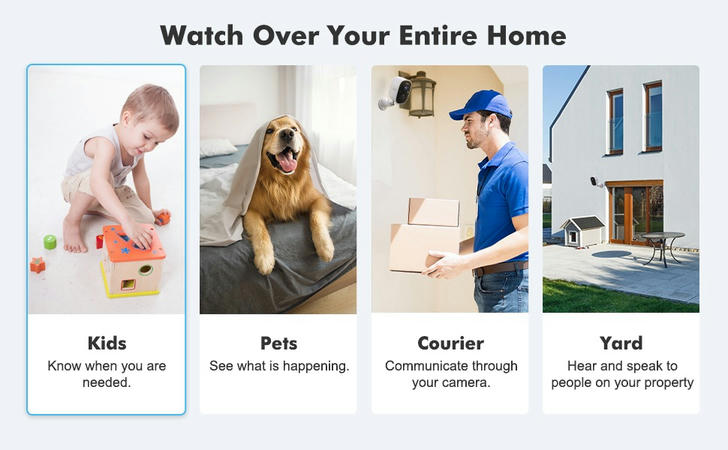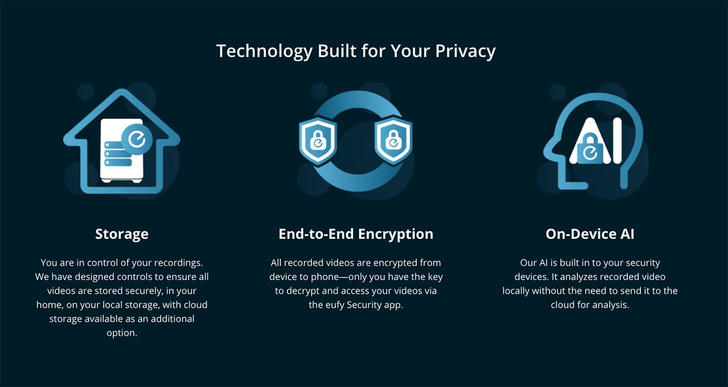Smarter Homes, Safer Families: What Makes AI Security Cameras So Powerful in 2025?
In 2025, home security has evolved from simple motion detection to full-scale smart surveillance systems powered by artificial intelligence. AI security cameras have quickly become one of the most in-demand products for homeowners, renters, and even small businesses—and for good reason. They offer real-time, intelligent protection that goes far beyond recording footage.
But what exactly makes AI security cameras in 2025 so powerful, and why are more families choosing them to protect their homes and loved ones?
The Evolution of Home Security: From Passive to Proactive
Traditional security cameras functioned mostly as reactive tools. They recorded footage, and someone had to manually review it after an incident. Modern AI-powered cameras, however, bring proactive intelligence to the table. They can:
- Recognize faces
- Detect unusual behaviors
- Distinguish between humans, animals, and vehicles
- Send instant alerts with context
- Trigger automated responses (like turning on lights or sounding alarms)
This shift from passive surveillance to active prevention is at the heart of their growing popularity.
Key Features That Set AI Security Cameras Apart in 2025
1. Facial Recognition and Object Detection
The latest AI cameras can accurately recognize specific individuals (like family members) and distinguish between people, pets, cars, packages, or unknown visitors. This allows for:
- Personalized alerts (“Your child has arrived home”)
- Reduced false alarms
- More useful notifications (“Unknown person detected at the back door”)
2. Behavior Prediction & Anomaly Detection
Using machine learning, these cameras can learn the usual patterns of activity in and around your home. If something deviates—like someone loitering near the front porch at midnight or an unusual entry pattern—it sends immediate alerts.
This feature makes predictive security possible, turning your home into a smart guardian that detects trouble before it happens.
3. 2-Way Audio with AI Noise Filtering
Advanced microphones with AI noise cancellation now allow for clear two-way communication. Whether you're talking to a delivery driver or warning an intruder, your voice is heard—crystal clear, even in noisy environments.
4. Integration with Smart Home Systems
AI security cameras in 2025 are fully integrated with voice assistants (like Alexa, Siri, or Google Assistant), lighting systems, door locks, and even thermostats. That means they can:
- Turn on lights if motion is detected
- Lock doors when a stranger is seen
- Activate alarms or notify emergency services automatically
5. Cloud and Edge AI Processing
Instead of sending all footage to the cloud, many AI cameras now process data locally (at the “edge”), which improves:
- Speed (real-time response)
- Privacy (fewer data sent to external servers)
- Cost efficiency (less cloud storage needed)
Top Use Cases for Families in 2025
Child Safety Get notified when kids get home from school, and check in through live feeds. AI alerts can even spot if a child is accompanied by someone unfamiliar.
Elderly Monitoring AI cameras can detect falls, inactivity, or wandering behavior in elderly family members, offering peace of mind for caregivers.
Package Theft Prevention With real-time object detection and person recognition, AI cameras alert you instantly to deliveries or potential porch pirates—and can even trigger verbal warnings.
Pet Monitoring Yes, they recognize pets too! Some cameras even have pet-specific alerts or laser-pointer features to interact remotely.
Night Surveillance AI-enabled night vision uses infrared plus object recognition to detect movement with impressive clarity—even in pitch-black settings.

Privacy and Ethical Considerations
With great power comes great responsibility. As facial recognition and 24/7 monitoring become more prevalent, concerns over privacy, data usage, and bias in AI algorithms are growing.
To combat this, leading brands in 2025 offer:
- On-device encryption
- Private mode scheduling
- Consent-based facial recognition
- Transparent AI policies
Consumers are also advised to choose cameras with GDPR or CCPA compliance if privacy is a top concern.

Most Popular AI Security Camera Brands in 2025
- Google Nest Cam 3.0 (Edge AI Edition)
- Ring ProVision AI
- Arlo AI Max
- EufyCam Vision+
- Wyze AI Sense
Each of these offers unique combinations of smart detection, cloud integration, and budget-friendly options for families.
What’s Next for AI Security?
The AI security landscape is still evolving. Here are a few innovations on the horizon:
- Predictive threat modeling using neighborhood data trends
- Emotion recognition for guests (or intruders)
- Drone-based AI patrol systems
- Multi-camera neural linking for complete situational awareness
- AI-generated incident reports for insurance and legal use
Final Thoughts
In 2025, AI security cameras have become essential not just for deterring crime, but for creating a safer, smarter, and more connected living environment. Whether you're a parent, a caregiver, or simply want peace of mind while away from home, these devices offer a powerful blend of technology and reassurance.
Smarter homes mean safer families—and AI is the brain making it all possible.
